With ever-changing customer needs and the advent of new technologies, companies are required to provide the best customer service possible.
And the quickest way to do that is by using the right customer experience tools.
These tools offer features that can help increase your customer engagement — which, in turn, boosts your sales. In fact, it can help you meet your business objectives and exceed customer expectations.
In this article, we’ll highlight the 10 best customer experience tools, including their key features, pricing, and customer ratings. We’ll also discover the top 3 benefits of customer experience tools and some tips on how to choose the right customer experience tool for your business.
Table of Contents
- 10 best customer experience tools
- What are customer experience tools?
- Top 3 benefits of customer experience tools
- How to choose the right customer experience tool?
- Final thoughts
Let’s get started!
10 best customer experience tools
The market is teeming with digital tools that can help you identify user problems and improve enterprise customer experience.
So let’s explore the ten best customer experience tools available today:
1. Zendesk

Zendesk is a customer service software that offers robust reporting tools to help you understand customer trends and create a better customer experience.
It offers omnichannel customer support to manage customer interactions via email, chat, social media, phone calls, etc. It also comes with an in-built customer experience survey feature to measure your service’s satisfaction.
Key features
- Lets you conduct Net Promoter Score (NPS) surveys to gather customer feedback.
- Allows you to view and analyze customer service performance using pre-built dashboards.
- Integrates with cloud Customer Relationship Management (CRM) systems.
Pricing
Zendesk offers paid plans starting at $19/agent per month.
Customer ratings
- G2: 4.3/5 (3,180+ reviews)
- Capterra: 4.4/5 (2,670+ reviews)
2. Salesforce Service Cloud
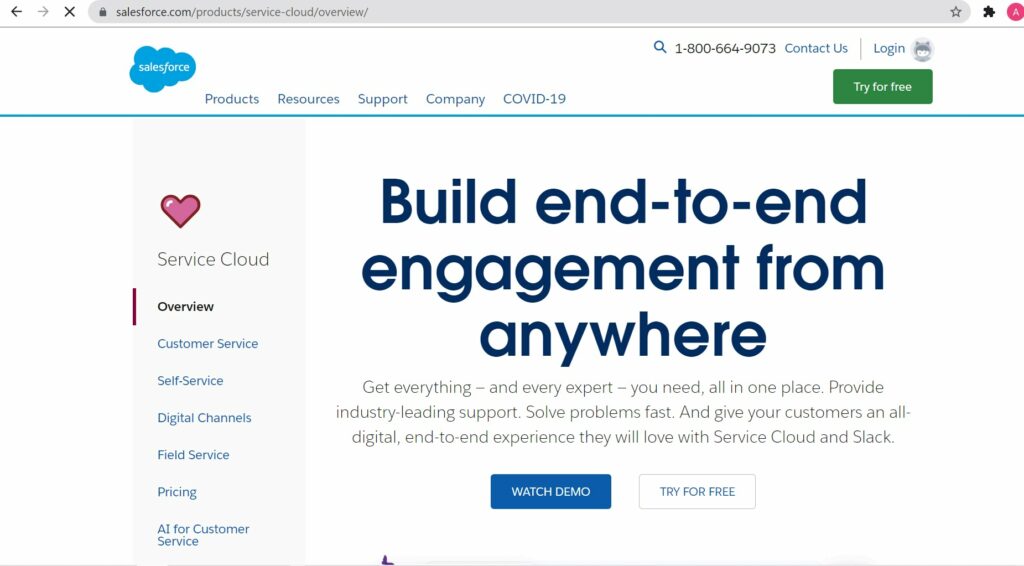
Salesforce Service Cloud is a CRM platform that helps you streamline all your customer support operations.
This help desk software offers a highly customizable user interface and an AI-powered chatbot that handles customer queries proactively. This reduces the customer service wait time and even the workload of customer support agents.
Key features
- Use this self-service portal to recommend relevant articles to customers.
- Automatically route customers to the most appropriate agents for quality service.
- Automate repetitive tasks to make customer service more efficient.
Pricing
Salesforce Service Cloud offers paid plans starting at $25/user per month.
Customer ratings
- G2: 4.1/5 (1,560+ reviews)
- Capterra: 4.4/5 (520+ reviews)
3. HubSpot Service Hub
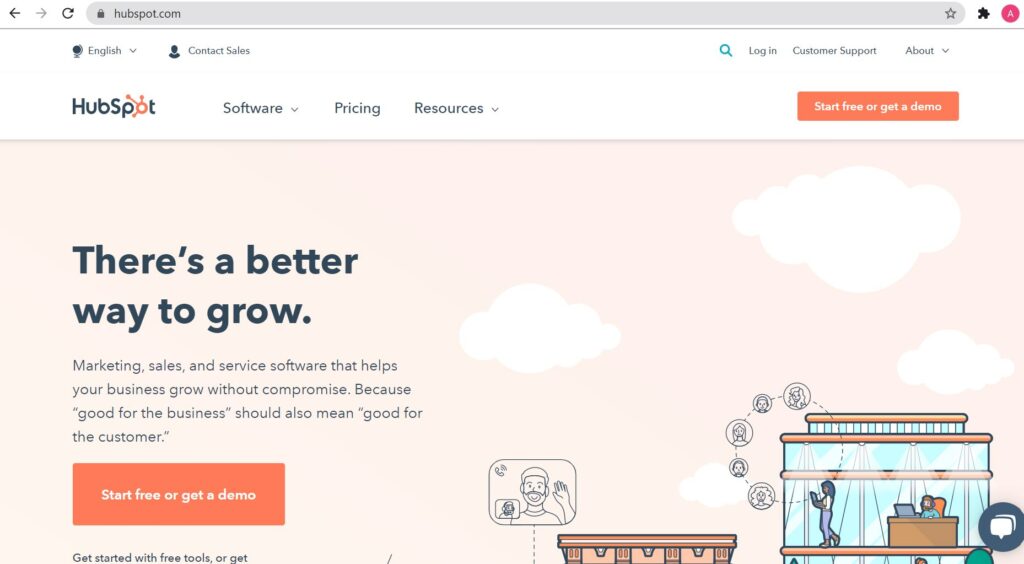
HubSpot Service Hub is a Customer Experience Management (CEM) platform that uses a ticketing system to handle all customer issues. It also offers inbound marketing solutions for e-commerce companies.
It comes with a visual reporting dashboard where you can assess the performance of your customer support team. This customer experience software also offers customer feedback features to help you gauge the customer satisfaction level.
Key features
- Track and streamline customer interactions end-to-end with the conversations inbox feature.
- Document answers to the most frequently asked customer questions in support articles.
- Connect with customers in real-time and respond promptly using live chat.
Pricing
HubSpot Service Hub offers paid plans starting at $50/month for two users.
Customer ratings
- G2: 4.4/5 (670+ reviews)
- Capterra: 4.4/5 (110+ reviews)
4. Acoustic Experience Analytics (Tealeaf)

Acoustic Experience Analytics (Tealeaf) is a SaaS-based customer experience solution designed to make the customer lifecycle a smooth journey.
You can replay sessions of your customers’ web browsing experience to identify and efficiently resolve their problems.
Moreover, this CX software alerts you of significant changes in customer behavior, so that you can take proper measures. It contains sentiment analysis features that help you detect positive or negative sentiments in customers via natural language processing (NLP) techniques.
Key features
- Lets you track down particular customer sessions with robust search functionality.
- Gives you an idea of the customer’s viewing activity on the web and mobile apps with the heatmaps feature.
- Lets you create KPI reports to track customer experience metrics such as customer retention rate, customer satisfaction score, etc.
Pricing
Request a quote from Acoustic Experience Analytics (Tealeaf).
Customer ratings
- G2: NA
- Capterra: NA.
5. Adobe Experience Manager

Adobe Experience Manager is a powerful content management system that helps you create and deliver a great customer experience.
With this customer experience management platform, you can create personalized content for your customers across web and mobile apps. You can even conduct a CX survey for measuring customer experience.
Moreover, it helps marketers with customer segmentation to assess and fulfill the diverse needs of their customers.
Key features
- Uses Artificial Intelligence (AI) to create and deliver customer-centric content quickly.
- Lets you interpret every customer decision with the customer journey analytics feature.
- Allows customer access to support articles and instructor-led training for guidance.
Pricing
Request a custom quote from Adobe Experience Manager.
Customer ratings
- G2: 3.8/5 (140+ reviews)
- Capterra: 4.3 (80+ reviews).
6. SAS Customer Experience
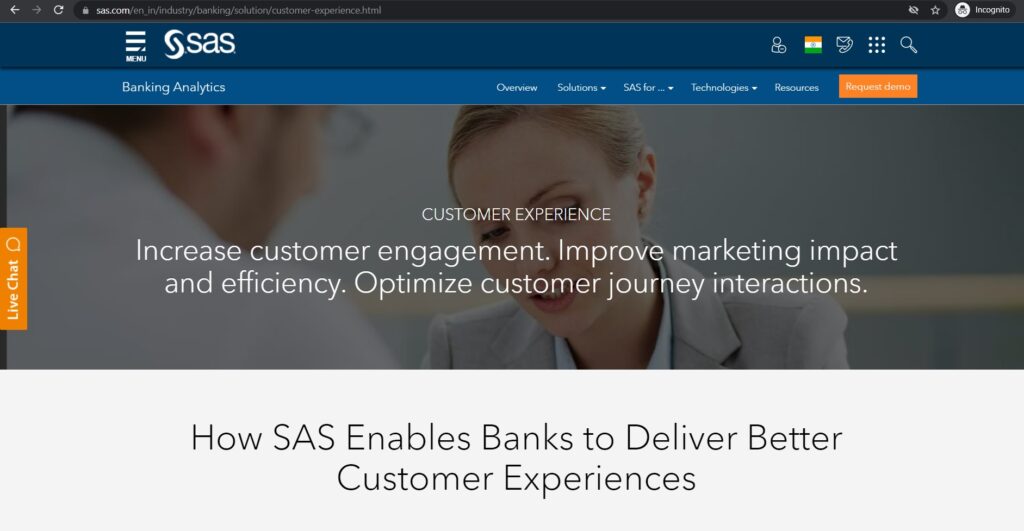
SAS Customer Experience is a platform designed especially for the finance sector like banks and accounting firms.
With the software’s AI-powered capabilities, you can get a better understanding of your customer needs. Consequently, you can create more relevant marketing campaigns and reduce sales overheads.
Key features
- Records every customer interaction with the customer experience analytics features.
- Applies machine learning to offer personalized recommendations to customers.
- Lets you create and view interactive dashboards with the visual analytics feature.
Pricing
Request a custom quote from SAS Customer Experience.
Customer ratings
- G2: NA
- Capterra: NA.
7. Medallia
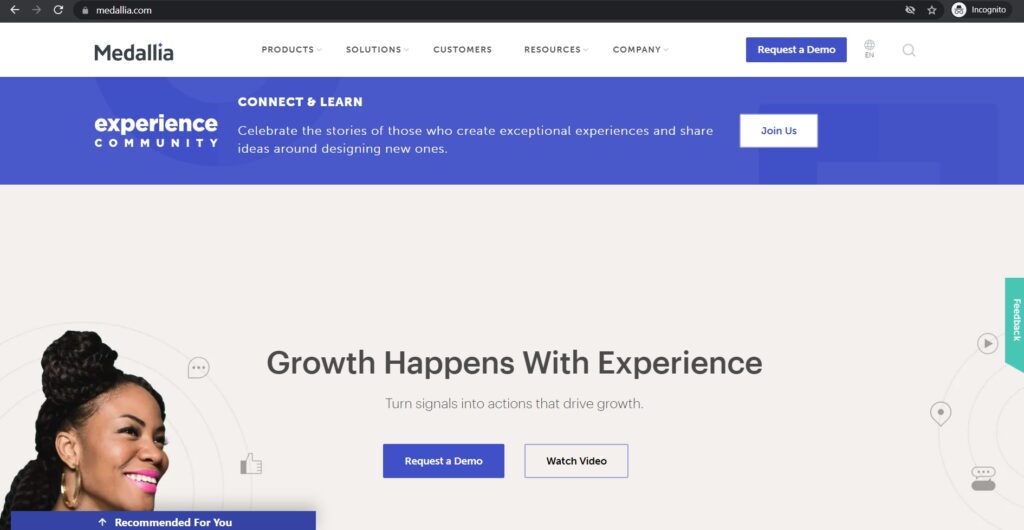
Medallia is a customer experience management software that effectively creates the customer journey map using AI and machine learning.
You can engage with your customers via branded emails, messaging, social media, calls, and webchat. With its powerful speech analytics, you can evaluate every customer call and find room for improvement.
Key features
- Lets you get a quick follow up and customer feedback through email, mobile, and website app customer surveys.
- Lets you collect user opinions about your latest ideas and updates with the ‘Ask Now’ feature.
- Offers access to previous feedback and conversation history to serve your customers better.
Pricing
Request a custom quote from Medallia
Customer ratings
- G2: 4.5/5 (80+ reviews)
- Capterra: 4.5 (20+ reviews)
8. Clarabridge

Clarabridge is an AI-enabled digital customer experience software that runs on a sophisticated speech and text analytics engine. This helps you explore the customer sentiment on every call recording.
It also offers pre-built dashboard templates, useful for viewing and assessing the customer experience.
Key features
- Get instant alerts about customer issues and reduce service wait time.
- Interact and collaborate with support team members on CX Studio dashboards.
- Gauge customer insight with feedback forms and predictive analytics.
Pricing
Request a custom quote from Clarabridge.
Customer ratings
- G2: 3.8/5 (15+ reviews)
- Capterra: NA
9. Genesys Cloud
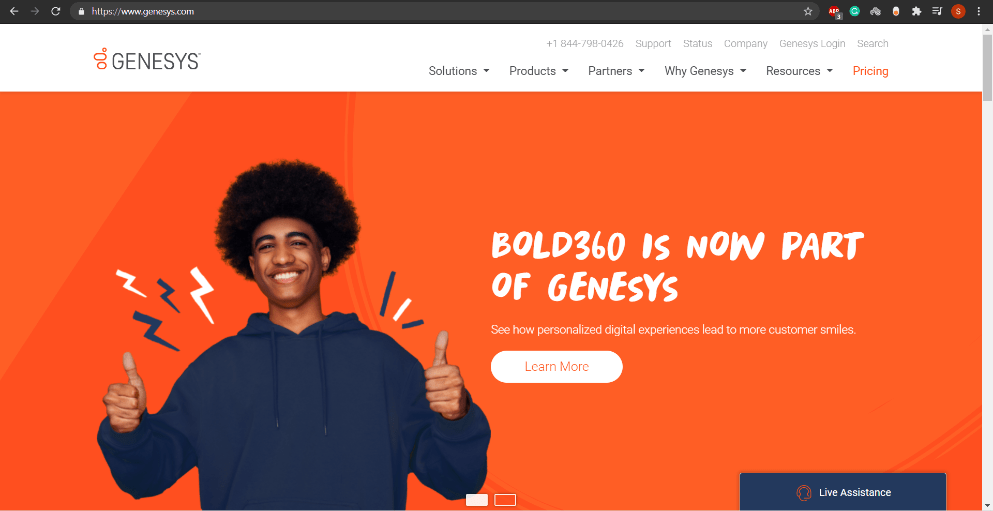
Genesys Cloud is a one-stop contact center solution that helps you with customer experience management. It’s one of the best cloud call center platforms, offering you collaborative capabilities where employees can discuss ideas over a call, chat, or video.
Additionally, its real-time dashboards give you an overview of the work and customers managed by every team member across departments.
Key features
- Uses AI to optimize chatbots for customer service betterment.
- Lets you monitor customer data, call duration, customer satisfaction, and other KPIs with the reporting feature.
- Integrates with other CRM tools like Zoho, Salesforce, InGenius, etc.
Pricing
Genesys Cloud offers paid plans starting at $75/month.
Customer ratings
- G2: 4.3/5 (490+ reviews)
- Capterra: 4.2/5 (120+ reviews).
10. Contentsquare

Contentsquare is a digital experience analytics platform that helps you understand customer behavior and identify their pain points.
It allows you to record user sessions so you can examine their website activity and add further value to their interaction. It integrates with Google Analytics and lets you track demographic interests, website traffic, customers’ geo-location, and more.
Key features
- Offers the customer journey mapping feature to help you understand their buying cycle.
- Sends alerts about changing KPIs so you can modify customer experience strategy.
- Checks and prevents recurring errors in work processes with the behavior analysis feature.
Pricing
Request a custom quote from Contentsquare.
Customer ratings
- G2: 4.5/5 (90+ reviews)
- Capterra: 4.8/5 (50+ reviews)
Want to learn how to improve customer experience?
Here are 10 no-nonsense steps to improve customer experience with ease.
What are customer experience tools?
Positive customer experience is one of the most significant determining factors for your business’ success.
This is where customer experience (CX) tools come into the picture.
They help you efficiently handle customer issues and requests. You can better evaluate customer pain points and identify ways to improve the entire customer journey.
CX tools also offer feedback management, ticket regulation, knowledge base management, advanced reporting, analytics, team collaboration, and content management. With such features, you can gather actionable insight to improve your customer service strategy.
Simply put, your CX tool can help you keep your customers coming back for more, or even better, spread the word about your business.
So if you’re thinking about using such a tool for your business, it’s time to learn what benefits it offers you.
Top 3 benefits of customer experience tools
Here are three major benefits of using customer experience tools:
1. Increased customer engagement
The CX platform helps you create a highly personalized experience for your customer. This can be anything from sending individualized messages to giving product recommendations based on user browsing activity.
Adding such touchpoints throughout their purchase journey leads to better customer engagement.
Such a personalized approach can make them feel valued and help you achieve greater customer loyalty.
2. Higher customer retention rate
Customer experience tools help you gather insightful information about customer behavior through surveys, feedback forms, AI, and so much more. Based on this information, you can frame your customer service strategy and always stay a step ahead of your customer’s needs.
When you anticipate your customers’ needs and create a solid engagement strategy, you improve your rate of successfully retaining happy customers.
Always remember, retaining existing customers and keeping them satisfied is more cost-effective than acquiring new customers.
3. Reduced marketing costs
With the support of analytics and customer behavioral reports in CX tools, you can adequately cater to your customer needs. This way, you won’t have to go out of your way to create brand awareness or market your products.
You can easily determine what might interest your customers from their buying behavior and provide them with what they’re looking for.
Convinced about getting a CX tool for your business but don’t know where to start?
Keep reading to learn how you can make the right choice.
How to choose the right customer experience tool?
The customer experience management tool that you choose should align with your company objectives and customer strategy.
Here are three things to keep in mind when you’re looking for customer experience software:
1. Analyze your business needs
You need to identify your organization’s strategic goals and your current methods to achieve them. This will help you figure out the shortcomings in your work processes and ways to improve them.
Once you have clarity about your business requirements, you’ll be able to narrow down on customer experience software that can help you scale your operations.
2. Assess your customer journey
Mapping out your customer journey will let you pinpoint the challenges your customers may be facing at each step. In fact, a standard customer journey template can help you identify the customer concerns and expectations at every stage.
This will give you a headstart in looking for software solutions that can help you remove or manage such hurdles. Consequently, your customers will enjoy a smooth buying or consulting experience.
3. Select software that suits your interests
Ultimately you’ll want to go with a tool that truly elevates your customer experiences. You need to assess all the features and functionalities that you can benefit from.
From workflow automation to meaningful communication, the tool you choose should help you increase sales productivity and customer satisfaction levels.
A company’s needs, objectives, and target audience are also shaped by its industrial sector. So choosing the right customer experience tool is an assimilation of all these factors along with the CX strategy you’re envisioning.
Final thoughts
Customer experience tools offer valuable insights into your customer journey as they progress through various sales funnel stages. It’s an effective way of minimizing customer churn and maximizing your profits.
When your employees and agents get the best support from customer experience tools, they can acquire high returns and lasting customer relationships.
Go through the software we covered here to understand which tool is right for your unique business needs.


